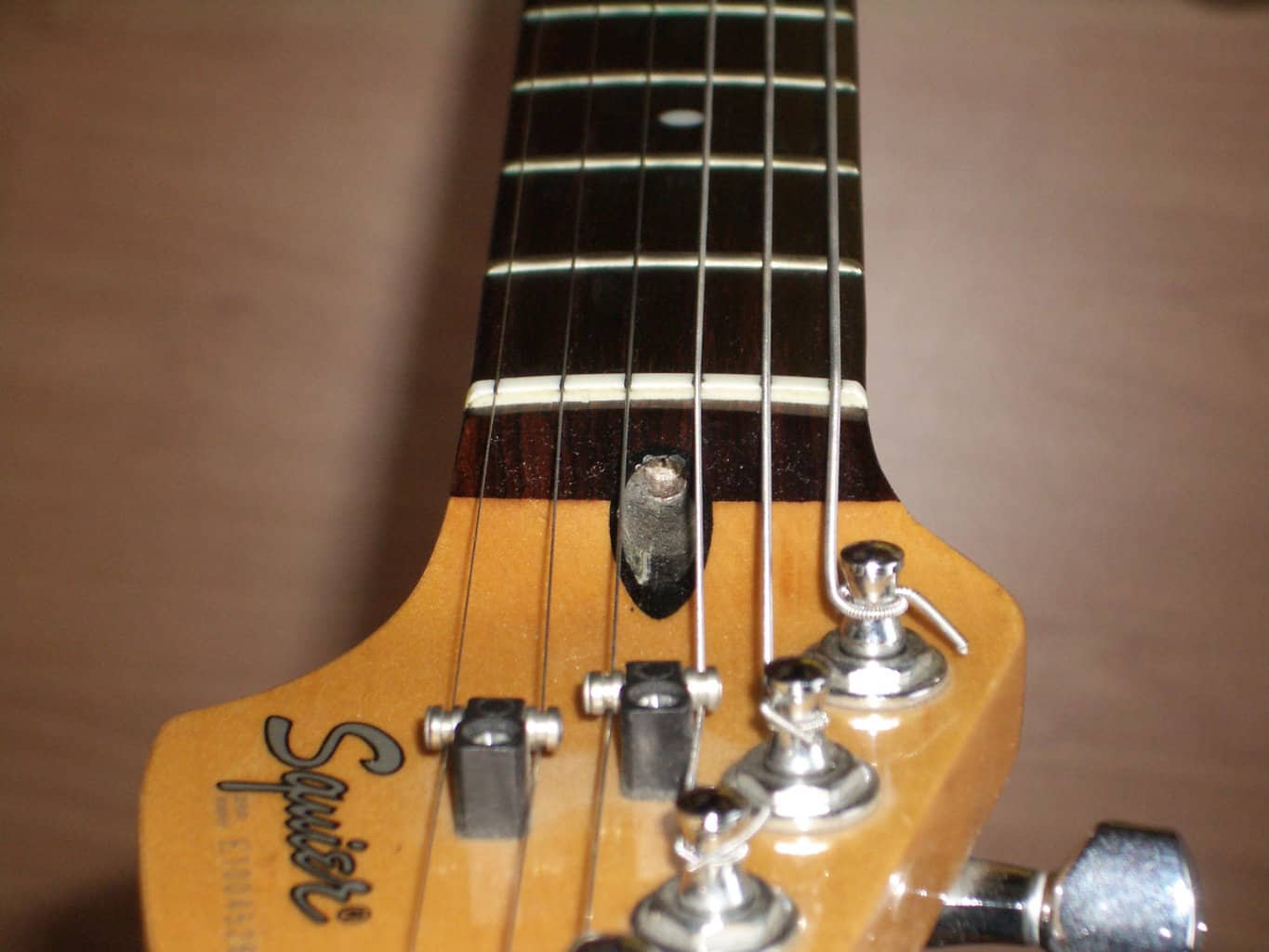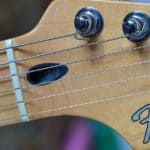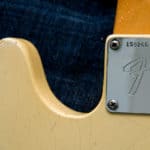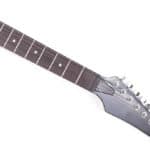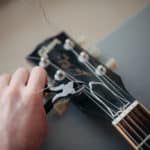Modern electric guitar necks are not completely made of wood.
Since players noticed that their guitar necks started bending after sudden changes in weather, ages ago, manufacturers started adding metal rods inside their necks to help maintain them straight.
But do these truss rods affect the tone? Here is a short answer:
Truss rods don’t have a direct impact on tone, however, due to their impact on string action, they can have an effect. Higher string actions are known to produce more open sounds with lower output, but extra sustain due to the strings being further to the pickups. The opposite happens for lower actions.
In this article, for those who want to dive deeper, I will talk about their effect on tone and playability in more detail.
After that, I will list and describe the 2 most common types of truss rods, and answer some frequent questions about them.
Finally, I will give you my conclusions and recommendations about how you should approach the decision of getting a new guitar in relation to its truss rod.
Are you ready to get started?
Let’s go!
Can a guitar’s truss rod affect its tone?
A truss rod per se is unlikely to affect the tone of a guitar. However, the effect of adjusting the neck with the truss rod is known to have implications in sound with varying intensities from instrument to instrument. Mainly, the resulting changes in action will likely affect the final tone.
Also, and when going to extremes, changes in action making the strings further away from the pickups will reduce the overall output and affect intonation.
On the contrary, when the action is very low, fret buzz is likely to happen and the pickups will be too close to the strings reducing sustain.
How much can a guitar’s truss rod affect its tone?
Quantifying how much a single part of an instrument could affect its overall tone is no easy task, and it would require serious deep scientific research.
The best I can do for you is give you the empirical evidence I could gather from my experience and those of some colleagues.
Adjusting the truss rod on a guitar will have a slight impact on tone, most likely due to the changes in action it would generate. This change in sound, however, will differ between guitars, and will not be obvious. There are many factors with a deeper influence in tone such as pickups and tonewoods.
Can a guitar’s truss rod affect its playability?
A guitar’s truss rod will have a significant impact on its playability. Not by just being there, but when it’s used to make adjustments to the neck. These adjustments will result in the modification of the instrument’s action which is a defining factor of what’s considered the playability of the guitar.
In fact, the truss rod’s main functionality is to affect the instrument’s playability and to compensate for deviations in the neck due to external factors such as weather changes.
How much can a guitar truss rod affect its playability?
The amount to which a guitar’s truss rod could affect its playability is not extreme. This fundamental part of every modern guitar is designed to just exert slight compensations to the arch of the neck. These inputs could affect action in a perceivable way, but not as strong as nut or bridge adjustments.
Most common types of truss rods and their functionality
There are 2 main types of truss rods that are commonly used by manufacturers across the board.
I will try to explain briefly how they work:
Single-action
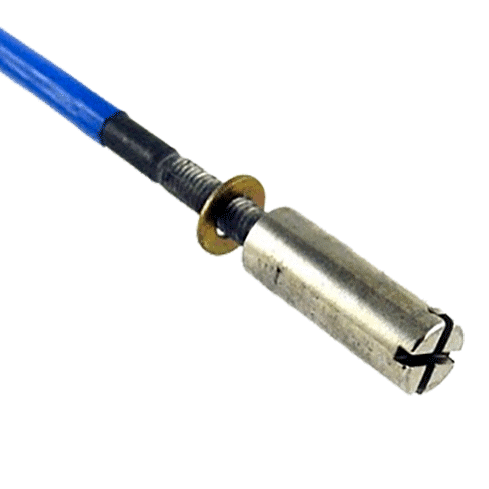
Single-action truss rods, also known as compression rods, are comprised of a single piece of steel, threaded on one end and fitted with a nut and washer. On the other end, they’re usually threaded to receive an anchor bolt or bent into an L-shape.
This kind of truss rod is inserted into a curved slot inside the neck, and when tightened exerts force to straighten out pushing against the tension of the strings and relieving any forward bow present.

This kind of truss rod can only straighten the neck and can’t generate a forward bow.
Dual-action
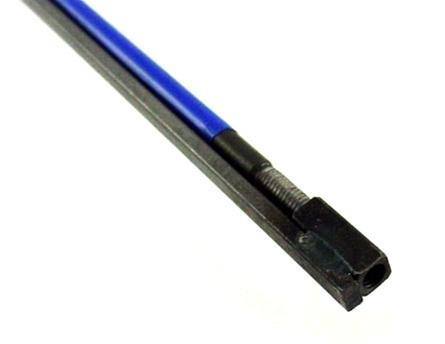
Dual-action truss rods or two-way rods, come in many different configurations. However, they all share the same feature: They add a second rod above the main one.
Basically, the added bar is fixed in length, while the adjustable one is allowed to expand or contract by the user’s adjustment.
The resulting force of this action results in a bend either concave or convex of the whole system which helps affect the neck bow in both directions.
This double capability of subtracting or adding neck bow is what makes this type of truss rod.
What is neck relief?
Neck relief is the resulting bend of a guitar’s neck due to the tension strings exert trying to pull the headstock towards the bridge. This relief can be adjusted with the truss rod, lowering the strings to be closer to the frets when the neck straightens. Neck bow can be caused by weather changes.
Does neck relief affect tone?
Neck relief, through its effect on string action, can have an impact on tone. Low action can result in fret buzz and a decrease in sustain, while high action can generate lower output due to the strings being further from the pickups and an increase in sustain.
These effects are not unique to neck relief and can also be achieved by adjusting the saddles at the bridge or the instrument’s nut.
Conclusions and recommendations
Whether you are looking for a new guitar or planning on building or having one built, getting to know, at least at a high level how truss rods work is, in my opinion, something that will help you make a better informed final decision.
However, here in GearAficionado, I always say that you should try out every instrument before buying it if you have the chance.
I don’t think anyone can really understand the impact of these different truss rods without getting to hear them live. At least try the ones that you think might work out better for you.
If it’s within your reach, try to get to play completely different guitars to clearly understand where the variation lies, and then start checking out ones closer to the one you preferred the most.
Finally, don’t forget to have fun. Technicalities for some people get the joy out of getting a new piece of gear. You don’t have to know it all about something that makes you smile. Just go and play the instrument that feels best to you.

Hello there, my name is Ramiro and I’ve been playing guitar for almost 20 years. I’m obsessed with everything gear-related and I thought it might be worth sharing it. From guitars, pedals, amps, and synths to studio gear and production tips, I hope you find what I post here useful, and I’ll try my best to keep it entertaining also.

